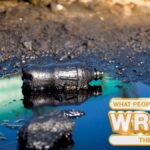Preserving Vital Information Amid Federal Website Changes
In recent times, driven by directives from the former Trump administration, numerous federal agency websites have undergone significant changes, leading to the removal or alteration of crucial research, reports, and references spanning topics from vaccinations to environmental policy. According to The New York Times, over 8,000 pages have vanished from the domains of various agencies, including the Centers for Disease Control and Prevention, the Census Bureau, the Department of Justice, and the Food and Drug Administration, among others. While some websites remain accessible, they have had critical discussions concerning diversity, gender, and climate change removed.
A collaborative response has emerged from scientists, journalists, researchers, and advocacy organizations aiming to gather and safeguard the data that has been erased or is in imminent danger of being lost from federal websites. For instance, CDCGuidelines.com provides a collection of downloadable PDFs on various important subjects such as contraception, healthcare for the LGBTQIA+ community, and issues surrounding intimate partner violence. Similarly, the Public Environmental Data Project has successfully replicated the Council on Environmental Quality’s Climate & Economic Justice Screening Tool, which had been previously taken down. Additional resources can be found at the Harvard Dataverse, a notable database for public information, as well as the End of Term Archive, which seeks to preserve government websites that may change or disappear during transitions between presidential administrations.
For those looking to track down deleted web pages, the Internet Archive’s Wayback Machine serves as an invaluable resource. This tool systematically captures and archives web pages across the internet, forming a repository of digital content. Users can input a specific URL, if they possess it, or explore particular collections, including .gov websites and related PDFs, using relevant keywords.
Accessing Deleted Websites via the Wayback Machine
To utilize the Wayback Machine, begin by visiting the Internet Archive’s homepage and entering the desired webpage URL into its search bar. Once results are displayed, hover over any calendar date highlighted with a blue circle, and click on a time from the pop-up menu, which signifies when the snapshot of the page was taken. Depending on the content being sought, it may be necessary to scroll back to the year 2024 for the appropriate record.
An alternative method involves searching via the collection bar located at the bottom of the Wayback Machine page. Here, you can input keywords and select a collection from the dropdown list. The Wayback Machine features collections dedicated to .gov pages and PDFs, along with specific data related to COVID-19 and term-end statistics.












